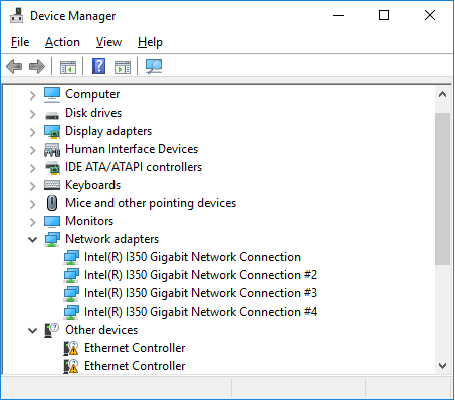
- #Windows 7 how to install network driver install
- #Windows 7 how to install network driver software
- #Windows 7 how to install network driver windows 7
#Windows 7 how to install network driver install
Once in Safe Mode with Internet and Windows installer enabled, I used IoBit Driver Booster Pro and it downloaded and installed drivers that I could not install in Normal Mode using the same procedure, and got the unsigned drivers dialog prompt! Open ‘System Configuration’ and boot into Safe Mode with Internet In RH pane, “check” the box ‘Enable Windows Install in Safe Mode”Ħ. 2nd from last on the list select ‘Windows Installer in Safe Mode’Ĥ. Scroll down LH navigation pane to ‘Behavior’ categoryģ.
#Windows 7 how to install network driver windows 7
Operating System: Windows 7 Ultimate 64-bit SP1ĬPU: Intel Core i5 9500, Coffee Lake 14nm Technology
#Windows 7 how to install network driver software
The problem about this method is you have to do that every time you boot up Windows and if you forget to select this option, you won’t get to load the unsigned drivers and the software that needs the driver won’t work. This first method is to continuously press F8 when Windows is booting up until you get the Advanced Boot Options menu, then select “Disable Driver Signature Enforcement”. There are still a few working ways to load unsigned drivers though… The Windows boot manager editor EasyBCD has an option which uses a command equivalent to DDISABLE_INTEGRITY_CHECKS, but as this is no longer useful, we would recommend you ignore this option in EasyBCD. There was also a number of separate security patches on Vista which caused the command to not work. It is believed this command was rendered useless with the release of Vista 圆4 SP1 and definitely doesn’t work on Windows 7 or 8. Into command prompt will do the job, but it doesn’t work on Windows 7 圆4. There are some tutorials suggesting that typing this command:īcdedit /set loadoptions DDISABLE_INTEGRITY_CHECKS



Fortunately, there are ways to force the unsigned drivers to load in 64-bit (圆4) versions of Windows 7, 8 and Vista. It appears the obtaining a certificate to perform driver signing costs hundreds of dollars per year and not every software developer can afford that kind of money especially when their software is freeware or open source.

We know that PeerGuardian has been superseded by a program called PeerBlock which doesn’t have these issues, but it’s just being used as an example to demonstrate the problem. This becomes a problem when using some legitimate software and you’re unable to load an older program such as PeerGuardian with the error message “Windows cannot verify the digital signature for this file” because of an unsigned driver. It is also very difficult for software that belongs to a high risk category to obtain a digital certificate and one example is the Elite Keylogger where it took them years to get their driver signed. This is by design to provide a more restrictive environment to protect Windows from easily being infected by rootkits, a type of malware that uses a driver for low level hooking. One of the common problems that people face when using a 64-bit Windows is loading unsigned drivers.


 0 kommentar(er)
0 kommentar(er)
